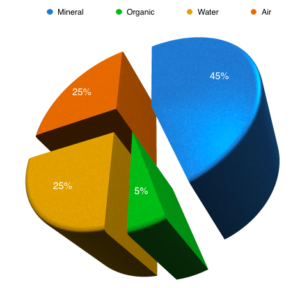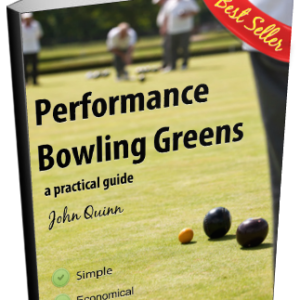In the previous articles in this series, we’ve discovered how to evaluate performance by simply looking for visual indicators on the turf and by gauging some of the functional attributes of grass plant communities when they form turf.
Before we move on to the final stage of this series where we will look at some of the latest and most objective techniques for performance measurement, I wanted to stop for a moment to consider what lies beneath the green layer.
All of the functionality and therefore performance of the bowling green depends on healthy turf and turf is of course not just grass plants. Turf is a construct of a healthy grass plant community containing millions of individual plants, growing in a medium that is suited to sustaining healthy growth and reproduction. The medium is, of course the soil our greens are built on; but what is soil?
If you look at the pie chart at the top of the article you will see the proportions of what I think of as the perfect soil.
Mineral Component
In the diagram you will see that 45% of the soil is made of Minerals. The mineral component of soil is usually made up of a mixture of 3 main groups and these are Sands, Silts and Clays. A suitable mixture of these is critical to the soil’s performance as they dictate the soil’s ability to provide nutrition and moisture to the grass plants and suitable drainage. The mix of sand, silt and clay defines the soil’s texture.
Organic Component
The organic component will ideally be around 5% and this is made up of living organisms, micro-organisms and dead, decomposing and already decomposed plant tissue (humus). The organic material is added to by the plants themselves as they produce thatch and the soil organisms break this down to release plant nutrients.
50% Nothing
Then there’s the remaining 50% of the soil to look for, but if you do, it might cause you some confusion, because in the ideal soil the remaining 50% of its volume will equate to nothing at all. In fact it is 50% space, or soil porosity to give it the correct name.
Ideally half of this space will be made up of small spaces called micro pores and large spaces called macro pores. The micro pores hold the soil solution which is a mix of water and plant available nutrient ions and the macro pores provide air space and this is where all of the drainage occurs after heavy rain. This air space keeps the soil well oxygenated so that it can sustain a huge population of soil microbes; around 1 billion in a teaspoon of soil.



